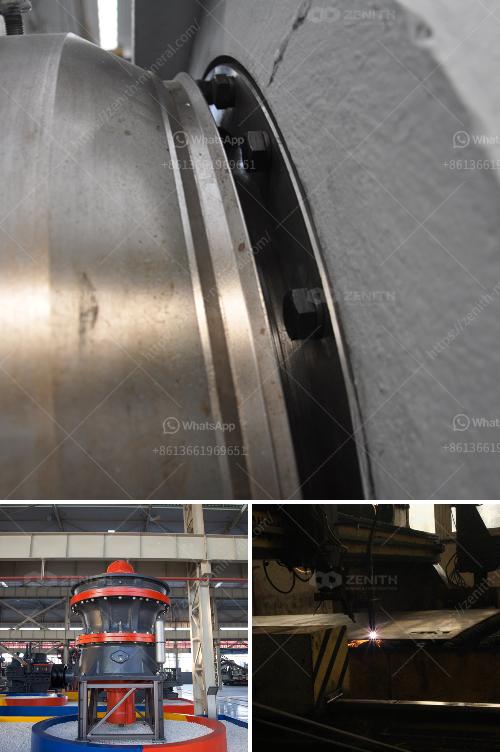Impact crushers, cone crushers, and jaw crushers are three types of crushing machines commonly used in various industries, each suited for different applications.
-
Impact Crushers:
- Mechanism: Impact crushers work by using impact force to crush materials. The material is fed into the crusher, where it encounters high-speed rotating blow bars. The blow bars throw the material against impact plates or breaker plates to reduce its size.
- Output Shape: They tend to produce more uniform and cubical particles, which is preferable in many construction applications.
- Applications: Suitable for softer, non-abrasive materials like limestone, coal, and gypsum. Also used in recycling operations for concrete and asphalt.
-
Cone Crushers:
- Mechanism: Cone crushers use compressive force to crush materials. The material is fed into a cone-shaped chamber where an eccentrically gyrating spindle grinds it down against a fixed outer surface.
- Output Shape: Produces more elongated particles and is excellent for delivering fine and medium-sized aggregates.
- Applications: Typically used for medium to very hard materials like granite, basalt, and other hard rock. Common in secondary, tertiary, and quaternary crushing stages.
-
Jaw Crushers:
- Mechanism: Jaw crushers use compressive force to break down large materials. They have two jaws, one fixed and one movable, which together form a V-shaped chamber. The material is fed into the top of the chamber and is gradually crushed by the compressive force as it moves downward.
- Output Shape: Produces more irregular particle shapes, but has high throughput and is effective for primary crushing.
- Applications: Ideal for the initial stage of crushing large and hard materials like ores, boulders, and recycling concrete.
In summary:
- Impact Crushers: Utilize impact force, ideal for softer materials and recycling.
- Cone Crushers: Utilize compressive force, best for medium to very hard materials and finer aggregates.
- Jaw Crushers: Also utilize compressive force, best for hard materials in primary crushing.

